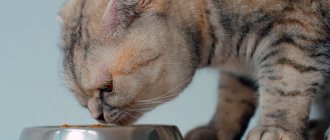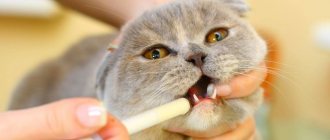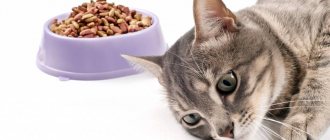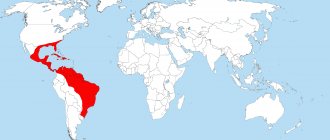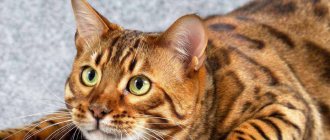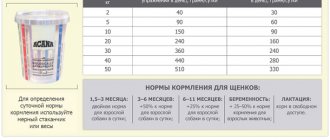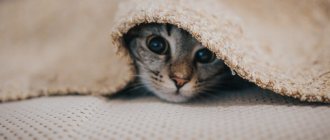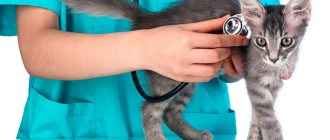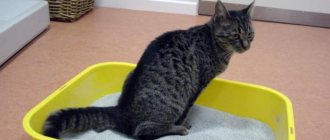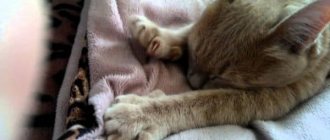A sensitive topic that causes a storm of emotions and condemnation from “caring” owners is the transfer of an animal to a new diet. But the situation really heats up to the limit when it comes to cats and refusal of dry food, even to the point of statements: “My Barsik will die of hunger!” But about everything in order - how to accustom a cat to homemade food, what is the need for this and what you will have to go through, read below.
Why is it difficult to wean a cat off store-bought food?
Weaning your pet off dry industrial food is not an easy task. In the process of changing the diet, the animal often shows unprecedented stubbornness. Why is this happening? The habits of representatives of the cat family are more stable than humans and therefore more difficult to combat. Another difficulty is that the composition of most brands of food includes various additives that enhance taste and aroma. This is especially true for so-called budget class food. After such food, even the best pieces of meat seem tasteless to the animals.
For many cats, dry food is a kind of food “drug”
Reasons for switching to fresh food
In some cases, the animal must be weaned off dry food.
- Eating economy class brands (Whiskas, Friskies, Felix) is harmful: they contain ballast substances that reduce the cost of production, but are useless and cause allergies.
- Good ready-made pellets are expensive and cost a lot, especially if you have several pets.
- It happens that a cat needs a strict diet: for some disorders, even veterinary food cannot help. Sometimes pancreatitis requires a diet that contains almost no fat. Industrial food will not meet this requirement because it is not normal for an animal that is not in a critical situation.
If you decide to switch your cat to high-quality dry food, you need to choose from the super-premium or holistic segment - they consist only of healthy ingredients (mostly natural meat) and do not contain bone meal, corn starch and other unnecessary additives.
Important points
In the process of retraining an animal, it is important to be persistent and consistent. If you do not live alone, agree with all household members to act rationally. Keep an especially close eye on children. Protecting their furry pet from the “monster and tyrant”, they can feed him the usual and favorite crackers. Such “concern” will negate all efforts and fruitful work on retraining.
Explain to your children that you are doing this not because you don’t love Barsik or Murka. But because you don’t want the fluffy to get sick. Ask for help and assign your child to make sure there is always plenty of fresh water near the pussy. More often than not, this tactic works flawlessly.
Effective methods and useful tips for weaning your pet off dry food
First of all, having decided to switch your cat from ready-made food to natural food, you need to be patient. At first, the animal will ignore even the most appetizing, from the owner’s point of view, pieces of meat and constantly beg for the usual dry granules. To wean your pet off ready-made food and switch it to a natural diet, you can use one of the following methods:
- Alternating dry food and natural dishes. When choosing this method of changing the diet, the animal needs to be fed 3-4 times a day. His usual food should be given in the first half of the day, and natural products in the second half of the day. The cat, of course, will be indignant and ignore such food, but the owner should not succumb to “provocations”. If the animal has not touched the food after 30 minutes, it should be removed.
- Mixing of dry granules and natural products. This method involves the simultaneous supply of natural products and industrial feed with a predominance of the latter. Before serving, dry food is soaked in water, which is then drained. First, you need to take 5 parts of dry granules, and 1 part of natural food. After 7 days, the amount of store-bought food must be reduced, and so on until the pet gets used to the food prepared for it by a person.
An option for the second method of changing the diet is to switch the cat to wet food. For an animal that has never tasted anything other than dry kibble, regular food will seem unappetizing even to the eye. Therefore, by first accustoming your pet to wet food, it will be easier to switch it to a natural diet.
Once your pet is accustomed to wet food, it will be easier to switch him to a natural diet.
What mistakes should the owner avoid when changing the diet?
Having chosen a method of weaning an animal from industrial food, you should act gradually, without deviating from the intended plan:
- No need to hurry. A sudden change in diet will not only lead to the so-called boycott, but will also provoke health problems in the animal. Switching from one diet to another may take at least 2 weeks.
- You should not give in to provocations. Your pet's hunger strike and loud demands for its favorite treats should be completely ignored. Not a single animal has ever died of starvation near a full bowl of food. Even one concession can nullify all efforts - the animal will understand that sooner or later it will get what it wants.
If there are children in the house, convince them that your actions are correct. Feeling sorry for their furry “starving” friend, they can secretly feed the animal, thereby nullifying all efforts to change the diet.
When changing the diet, you need to completely ignore your pet’s hunger strike and loud demand for favorite treats
What not to do
Have you already chosen a way to wean your cat off food? Then remember a few rules:
- Take your time. Sometimes it can take months to relearn. A drastic change in the usual diet will discord your relationship, lead to a boycott and changes in the animal’s well-being.
- Don't spoil your pet. Of course, sometimes it’s not only possible, but also necessary to treat you to something tasty. But you should not “put” food into the animal’s mouth. You're not going to indulge all his whims for the rest of your life, are you? This is not the way to start. The attitude towards the animal should remain equal and friendly, as always.
Basic principles of eating natural foods
When changing your diet, you should know that natural food is not the food that a person prepares for himself, but specially prepared dishes for cats from approved products, without salt and spices. A balanced diet is important for normal well-being, health, and the proper development of all systems of the animal’s body. Eating well is about more than just making the right food choices. The responsible owner must also adhere to the recommendations for organizing the feeding regime. Very young kittens should be fed frequently - up to 5 times a day, from four to five months - 3-4 times, after six months - 3 times, and from a year - 2 times a day. In order to prevent vitamin deficiency, experts advise enriching pets' diet with vitamin and mineral supplements, such as Canina Canivita, Gimpet, BEAPHAR KITTY'S TAURINE + BIOTIN, Doctor ZOO.
The volume of the daily portion should be calculated based on the following standards: per kilogram of weight of an active healthy animal there should be at least 10 grams of protein, 2 grams of fat and carbohydrates. The sufficient energy value of an animal's diet during the growth period is 200 kcal, and 80 kcal is enough for an adult cat.
Whatever the feeding regimen, the pet should have free access to a bowl of water. It should always be fresh, for this it must be changed 2 times a day.
Table: which foods can be included in a cat’s diet and which cannot
| Allowed | Prohibited |
| Beef, lean poultry meat - chicken, turkey | Fatty meat - pork, duck, goose |
| Boiled by-products 1–2 times a week | Cow's milk |
| Fish, only marine varieties, boiled - 1-2 times a week | River fish |
| Cottage cheese, kefir | Any flour products, sweets |
| Yolk | Potatoes, legumes |
| Vegetables, except those on the prohibited list | Mushrooms |
| Cereals | Onion garlic |
| Oil - regular vegetable or flaxseed | Spices |
| Any canned, pickled and sausage products |
A cat's natural diet is not food from the human table
More than half of the daily amount of food - 60–70% - should come from meat (it can be boiled or raw) and dairy products. You can give the yolk once every 7 days, and boiled fish with the same frequency. Cereals should be well boiled, all food should be given to the pet warm. Oil should be added to the main dish 2-3 times a week - half a teaspoon. The only acceptable way to process food for a cat is cooking.
Why wean?
This diet promotes the formation of tartar in your beloved animal.
Unlike wet store-bought products sold in special bags or jars, dry food has many disadvantages, which are the main reason why owners decide to switch their four-legged friend to natural food or give him wet food. The main disadvantages of dry products are:
- The presence of a large number of chemical additives that negatively affect the health and well-being of the pet.
- Lack of fluid in the body, especially if the kitten is not accustomed to drinking the required amount of water. This leads to disruption of the digestive organs and kidneys.
- No load on teeth. The finished dry product consists of small granules that the cat will simply swallow, since there is no need to chew them. As a result, plaque, tartar, and gum inflammation form on the teeth.
- Abundance of salt. Dry foods, especially cheap ones, contain a lot of salt, which in excess leads to kidney dysfunction in cats.
- Dysbacteriosis. Due to the lack of favorable conditions for reproduction, beneficial intestinal microflora dies over time. The cat suffers from abdominal pain, diarrhea, and colic.
- Oncology. The chemicals that make up the food, accumulating in the body, contribute to the degeneration of healthy cells into cancer cells.
During the selection of optimal factory nutrition, animals often suffer from allergic reactions.
Artificial food from bags can cause a severe allergic reaction in an animal, because it is impossible to immediately select food that is ideal for an individual case. Vitamin deficiency is a common reason why many owners switch their pets to natural food. Unscrupulous manufacturers violate the recipe and do not add the required amount of vitamins and other nutrients necessary for the full growth and development of the cat.
What should be included in the diet?
For your pet to live a long and healthy life, it needs to be fed properly. What do cats like to eat and what should be included in their weekly diet?
We suggest you read: Zebra finches care at home
Try to regularly give your cat the following foods:
- Raw lean meat. Chicken, rabbit, turkey or beef are great.
- Fish. It also should not be greasy and must undergo heat treatment.
- Egg yolk. One piece per week is enough.
- A variety of dairy products. Here, too, you need to remember about fat content.
- Broths and soups. Diversity is allowed here. The main thing is that the pet likes it.
- Boiled liver and offal.
- Raw and stewed vegetables. It all depends on the individual preferences of the animal. Some people like melon, others like cucumbers.
- Cereals in the form of porridges and casseroles.
Many less experienced owners are interested in whether cats can have cheese? On the one hand, it seems to be a dairy product, but on the other, it is quite fatty and can cause harm to the animal. The answer in this case is quite simple. If you occasionally pamper your pet with a small piece, nothing bad will happen. But you shouldn't feed your cat cheese regularly.
What do I, being so smart, feed my cats?
I'm telling you:
- boiled meat (beef, chicken);
- boiled duck and goose liver (heart, kidneys) when cutting poultry;
- boiled sea fish (hake, pollock, blue whiting);
- milk porridge (semolina, rice);
- porridge with canned fish (saury);
- soup in meat broth with carrots and meat;
- Borsch with sour cream;
- cottage cheese with sour cream (it doesn’t always work, but I give it regularly);
- meatballs with stewed vegetables;
- boiled sausage (milk sausages, amateur sausages, doctor’s sausage).
That's basically it. Although no, not everything:
- In the summer, sometimes I bring them grass from the garden and the cats are eager to “graze.”
- For the winter, I prepared a bunch of natural hay for them.
- Well, there’s also a box of vitamins.
That's it now. And look at . How strong and healthy they are. None of them are obese, despite the breed's tendency. The cats are lean, active and in athletic shape.
KotoDigest
Thank you for subscribing, check your inbox: you should receive an email asking you to confirm your subscription
Many people are sure that there is nothing difficult about caring for a cat. It is enough to pour food from a bag into her bowl. What could be simpler?
But such owners do not think about the fact that such food can cause harm to the animal. If you already have a cat accustomed to food in your hands, it is absolutely not necessary to poison the fluffy further. With a little persistence and patience, you can wean your cat off food. We will tell you how to do this in today’s article.
Monosodium glutamate is one of the causes of addiction
The food additive E621, which is a flavor enhancer, is included in most dry diets intended for feeding pets:
- This component not only gives the product an unnatural taste, but also irritates the taste buds.
- Cats get used to the rich taste and aroma of granules, so natural food does not arouse their interest.
- Refusing the “correct” food, the pet will use all its charms, begging for familiar food and treats. It is important for the owner not to give up at this moment.
The fact that monosodium glutamate is very harmful to the animal’s body and can cause the development of cancer pathologies will help strengthen the owner’s willpower.
Also watch the video on how to wean a cat off food:
Some tips
If you have found a suitable way to wean your cat off dry food, follow through to the end. Do not succumb to cat provocations and expressive “hungry” looks. Act confidently and persistently. Stick to your plan.
If an animal has declared a boycott, do not starve it for weeks. It may be dangerous. Try to arouse interest in homemade food by treating them to some kind of delicacy. Offer a little different food: a piece of meat, sausage, a slice of bread, a slice of cucumber, a slice of potato. A hungry animal will definitely be interested in something.
